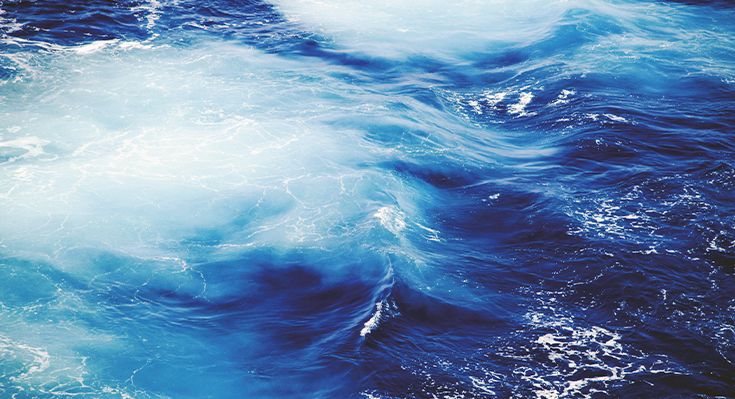
Crossing the Pacific
3300 miles, some of the world's deepest ocean basins, and unpredictable weather patterns will test our offshore segment. Our collaborations with True Ambassadors play a pivotal role in our product development process, where rigorous testing under harsh conditions provides invaluable feedback. This ensures that our products are equipped to withstand their environment and the challenges they encounter, ultimately delivering the most effective functionality for their purpose, with the best possible design and highest quality to you.
Our new sailing jacket, the Defender Offshore Jacket, is the result of many years of testing and development alongside our True Ambassadors. Now, the jacket, along with a carefully selected list of equipment, will demonstrate its capabilities in a race across the Pacific Ocean, from California to French Polynesia. The crew will set sail in early April 2024.
Unpredictable Conditions
Navigating the world's largest ocean by sailboat is no easy feat. Each year, about 100 boats make the 3300-mile journey across the Pacific Ocean, from the west coast of the USA to the Marquesas Islands. Compare that to the Atlantic, where several thousand boats cross the ocean annually. The Pacific Ocean is less calm and more unpredictable than the Atlantic, even when sailing during the most favorable time of the year.
The allure of sailing towards the paradisiacal islands of the South Pacific is undeniable. Picture swaying palm trees, crystal-clear waters surrounding tropical islands — a vision so captivating that one is willing to endure whatever challenges lie ahead to reach it. But the journey is characterized by long night watches, fixing, repairing and daily encounters with the elements of the sea; competing swell patterns, rain showers, and sudden thunderstorms with fierce winds.
ITCZ
The Intertropical Convergence Zone, or ITCZ, is the region that circles the Earth, near the equator, where the trade winds of the Northern and Southern Hemispheres come together. The intense sun and warm water of the equator heats the air in the ITCZ, raising its humidity and making it buoyant. Aided by the convergence of the trade winds, the buoyant air rises. As the air rises it expands and cools, releasing the accumulated moisture in an almost perpetual series of thunderstorms. The zone has a historically bad reputation among sailors and is known as the doldrums or the calms because of its monotonous windless weather. The zone constantly shifts, and the best strategy for crossing the low-pressure belt is to try to find its narrowest part and cross there.

Appropriate Equipment
Sailing demands a high tolerance for discomfort alongside thorough preparation and proper equipment to withstand the rigors of weeks at sea without land in sight. In the most unfavorable conditions, the Defender Offshore Jacket and Defender Salopette Trousers will provide complete protection.
The jacket is a durable and flexible sailing jacket, crafted in Hi:RES® 2x2 SW4L stretch membrane; a 4-layer fabric that excels in being windproof, waterproof, and breathable. Engineered with numerous practical features, it stands up to high waves and strong winds without compromising mobility, allowing you to work effortlessly on board. Fully taped seams, welded pockets, dual sleeve cuffs, with the inner one made of elastic PU with Velcro, and YKK AquaGuard zipper keep all water from penetrating. A fluorescent hood and details meeting EN471 standards make you visible at night and in the most unpleasant sea states. The adjustable hood is reinforced at the front with transparent side panels.
The sailing trousers, available in a durable unisex design, feature the same Hi:RES® 2x2 SW4L stretch membrane fabric as the jacket. Fully taped seams, welded pockets, and a YKK AquaGuard zipper keep all water from penetrating. Fluorescent and reflective details meeting EN471 standard make one visible in reduced visibility. Reinforced with XYRPLEX™ in vulnerable areas and equipped with multiple adjustable points, the trousers offer a tailored fit for unrestricted onboard movement.
In the warm, humid climate, the W Arc Mesh Polo and 1300 Shorts will wick moisture away from the body. The Challenge Hood Jacket provides protection against the warm showers without causing one to sweat, while the Planned Zip offers warmth during night watches.
Thorough Preparation and Training
Sailing long distances requires careful planning. In January 2024, the crew met in California for a weekend of sailing trials, acquainting themselves with the vessel and each other. Safely crossing the ocean requires not only weather and route planning but also preparation for safety, provisioning ample food, water, and fuel. High-performance boats in good condition are ideal for this type of sailing, and the boat that will take the crew across the Pacific Ocean is an X49.
What Lies Beyond
For the average cruising sailor, the voyage from California to the Marquesas typically spans about four weeks. This time, the crossing is planned to take 16 days. Upon crossing the ITCZ belt and approaching French Polynesia, southeast trade winds, clear skies, and a constant breeze of approximately 20 knots are anticipated. The sight of land marks the arrival at one of the world's most remote island groups —the Marquesas Islands.
Situated approximately 1,370 km northeast of Tahiti and 4,800 km from the west coast of Mexico, the archipelago is characterized by epic volcanic peaks towering above crystalline waters. After several days of recuperation onshore, the final leg towards Tahiti awaits.
Included in the packing
W Cruise shirt
